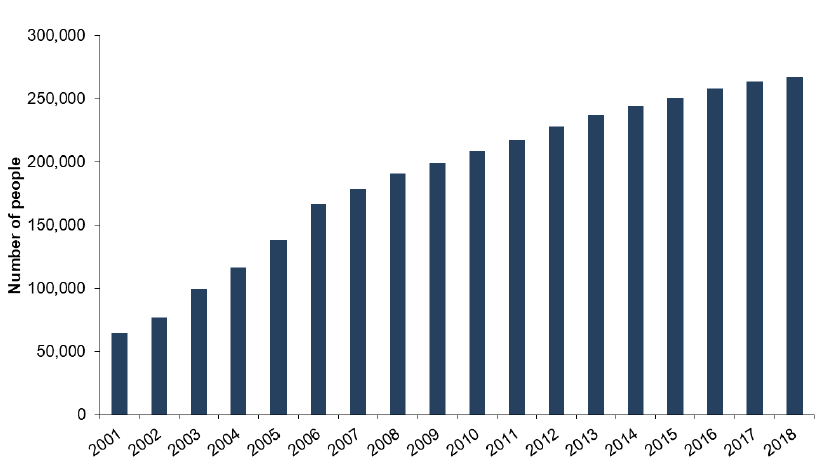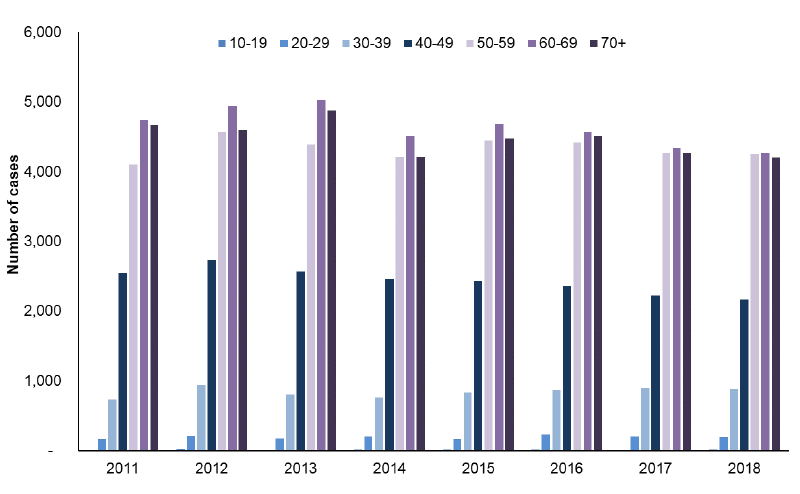Diet and healthy weight: monitoring report 2020
Latest results against the obesity indicator framework originally developed to monitor progress against our Prevention of Obesity Route Map (February 2010), now superseded by the Diet and Healthy Weight Delivery Plan and Active Scotland Delivery Plan (summer 2018).
This document is part of a collection
Prevalence of Type 2 diabetes
Footnote [10]
Scottish Diabetes Survey
Latest results
- At the end of 2018, there were 304,375 people diagnosed with diabetes in Scotland recorded on local diabetes registers. This represented 5.6% of the population of all ages.
- Of all cases, 87.9% (267,615) were Type 2 diabetes.
- A greater proportion of those with diagnosed Type 2 diabetes are male (56.4%). This proportion has remained relatively stable since the survey started in 2001.

- Although the number of people with a Type 2 diabetes diagnosis continues to increase steadily[11], there were 15,980 new cases of Type 2 diabetes in 2018, down from 16,216 in 2017.
- In 2018, the highest number of new Type 2 diabetes cases was observed in the 60-69 age group (4,268), followed by the 50-59 age group (4,252).
- In 2018, 31.8% of patients with a recorded BMI and Type 2 diabetes were overweight (BMI 25 to less than 30) and 55.2% were obese (BMI 30+).

Equalities
Breakdowns by sex, age and ethnicity are included in the survey. Ethnic group is collected by the survey but subject to variable response rates and may require several years of data to be combined. Breakdowns by religion, disability and sexual orientation are not available.
Geography available
Scotland and health board level from 2009.
Rationale for including prevalence of Type 2 diabetes
These data are useful to monitor changes in the proportion of Scotland's population who have Type 2 diabetes. The Scottish Public Health Observatory estimates that almost half of Type 2 diabetes can be attributed to obesity. Diabetes is an important cause of disability and increases the risk of coronary heart disease and other health problems. Complications associated with diabetes include peripheral vascular disease (foot ulcers), which can in turn lead to amputation and diabetic retinopathy- the commonest cause of blindness in working age people. Those with poor glucose control are at increased risk of developing complications.
Type 2 diabetes is more common in deprived areas, and becomes much more common with increasing age. Overweight and obesity are also important risk factors: the risk of Type 2 diabetes is around ten times higher among those with a BMI over 30 compared to those with a BMI under 30.
Factors influencing prevalence of Type 2 diabetes
Poor diet (specifically excess energy intake), low levels of physical activity, and the resulting increase in levels of obesity.
Contact
There is a problem
Thanks for your feedback